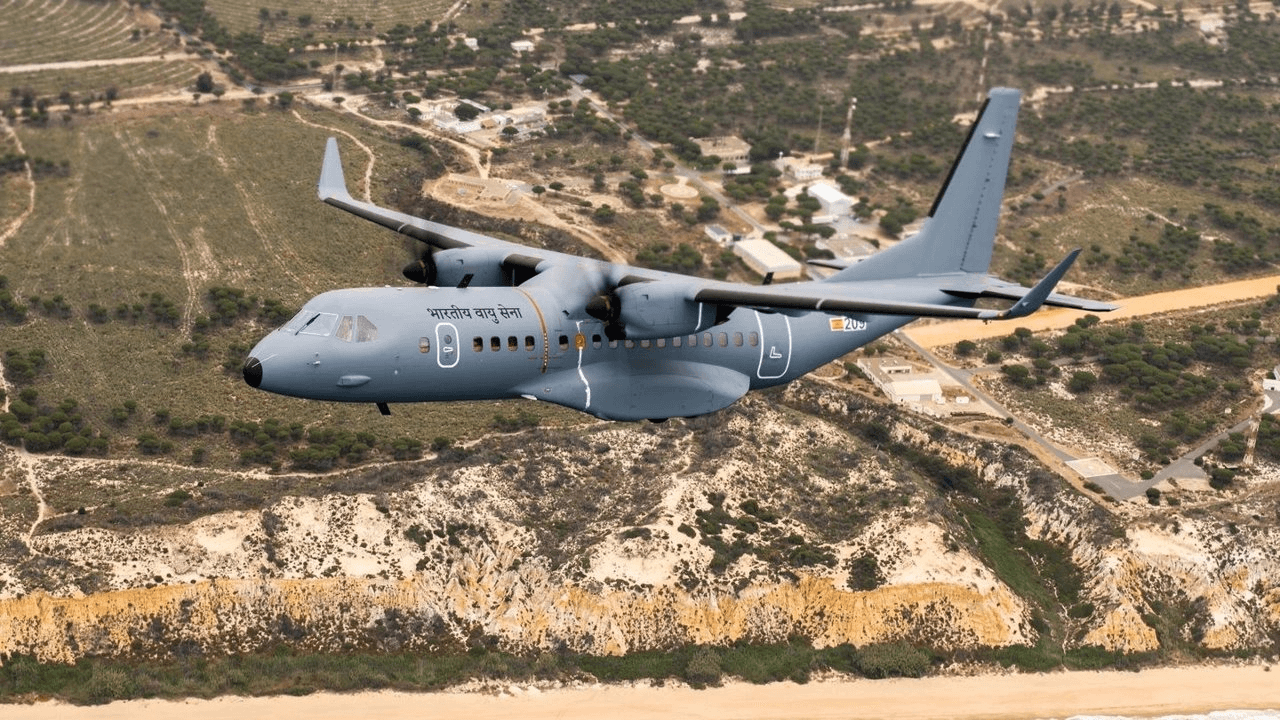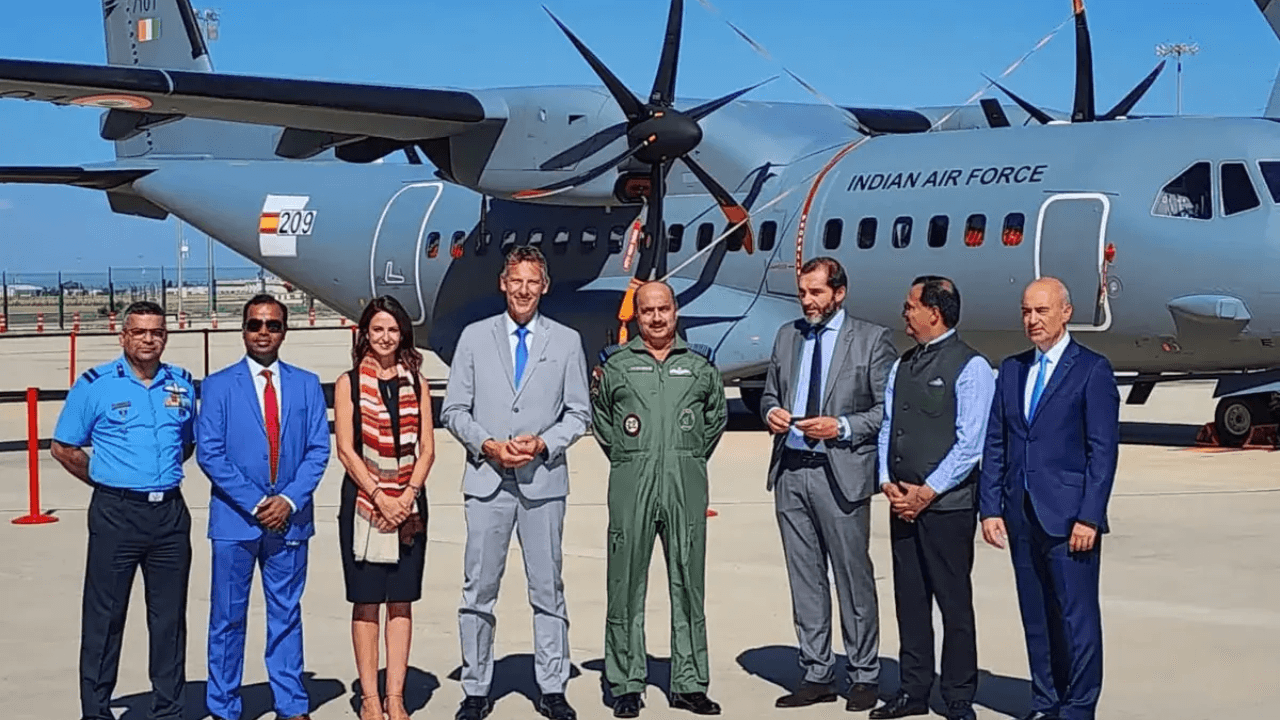First C295 Aircraft
First C295 Aircraft: India has achieved a historic milestone in its aviation history with the arrival of the inaugural C295 aircraft, marking a momentous development in the nation’s aerospace landscape. This achievement is the outcome of a groundbreaking collaboration between the European aviation powerhouse Airbus and India’s conglomerate Tata Group, signifying the maiden involvement of an Indian private entity in the production of aircraft.
Handover Ceremony in Spain
In a historic ceremony, Air Chief Marshal V.R. Chaudhari, Chief of the Indian Air Force (IAF), officially took delivery of the first C295 aircraft at Airbus’s production facility in Seville, Spain. Following this symbolic handover, the aircraft is slated to be transported back to India, where a formal induction ceremony is scheduled to be held at the Hindon air base in Ghaziabad on the 25th of September.
Modernizing India’s Air Force: C295 Aircraft

The C295 aircraft is poised to replace the aging Avro fleet currently in service with the IAF. This modern aircraft has the capability to transport up to nine tonnes of payload or accommodate as many as 71 troops, all while boasting a maximum cruise speed of approximately 480 kilometers per hour. A distinctive feature is its rear ramp designed for efficient loading and unloading, addressing a shortcoming in the Avro fleet.
Versatile Operational Features
The C295 aircraft showcases remarkable versatility, capable of operating at altitudes of up to 30,000 feet. Its capacity to take off and land on short, soft, rough, and unprepared airstrips sets it apart, addressing a limitation of the Avro. Furthermore, the C295 can execute low-level flight maneuvers, maintaining a minimum speed of 110 knots. These attributes make it adaptable to a broad spectrum of operational scenarios.
Multi-Mission Adaptability
Beyond its primary role as a transport aircraft, the C295 can be customized for various missions. Equipped with a multi-mission radar that can be weaponized for close air support operations, the aircraft’s capabilities extend to maritime surveillance, anti-submarine warfare, electronic intelligence (ELINT), and communications intelligence (COMINT) operations, enhancing its utility in diverse roles.
Advanced Power and Technology
The C295 aircraft is powered by two Pratt & Whitney Canada PW127G turboprop engines, ensuring robust and dependable performance. Each of the 56 aircraft in this project will feature an indigenous Electronic Warfare suite produced by Bharat Electronics Ltd and Bharat Dynamics Ltd. Remarkably, the TATA consortium will oversee integrated system testing, with delivery facilitated through self-certification, marking a significant accomplishment in itself.
Enhanced Performance with Winglets
Airbus has bolstered the C295’s performance by incorporating winglets, which significantly enhance takeoff characteristics, particularly at hot and high-altitude airfields. These winglets also increase cruise altitudes, endurance, and reduce overall fuel consumption by three to six percent. Winglets, positioned at the wingtips, function as miniature airfoils, diminishing aerodynamic drag caused by wingtip vortices.
State-of-the-Art Cockpit
The C295 boasts a state-of-the-art cockpit, facilitating a wide range of operations with a two-person crew. It includes four 14.1-inch multifunctional touchscreen displays, reconfigurable screens, electronic charts, checklists, and system status reports. Additionally, the cockpit is compatible with night vision goggles (NVGs), ensuring optimal functionality under various conditions.
Pioneering Self-Reliance in India’s Aviation Industry: C295 Aircraft
For the Indian Air Force, the introduction of the C295 aircraft significantly bolsters its tactical airlift capabilities. On a national scale, this achievement signifies the commencement of a new era in India’s aviation industry, emblematic of the initial steps toward self-sufficiency in aircraft manufacturing. The collaboration between Airbus and Tata Group represents a historic moment in the country’s pursuit of aerospace self-reliance.
- Indian Bank Recruitment 2025 Out for 1500 Apprentice Posts
- Indian Bank Apprentice Salary 2025, Pay Scale, Salary Structure
- Indian Bank Apprentice Syllabus & Exam Pattern 2025, Check Details
- Railway RPF Syllabus 2024, Check Exam Pattern, Topic And Syllabus
- SSC JE vs RRB JE, Which Is Better? Know Detailed Comparison

